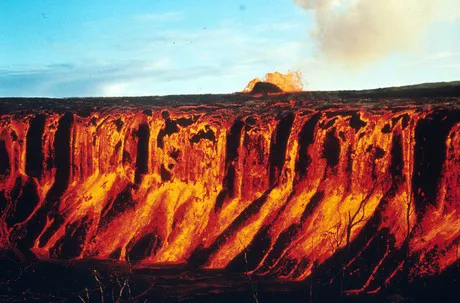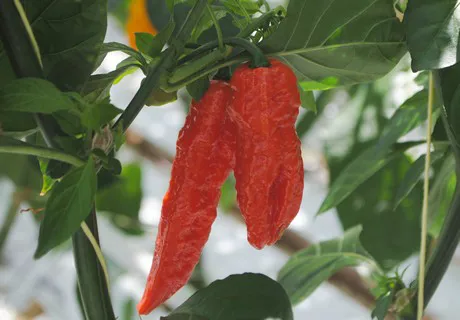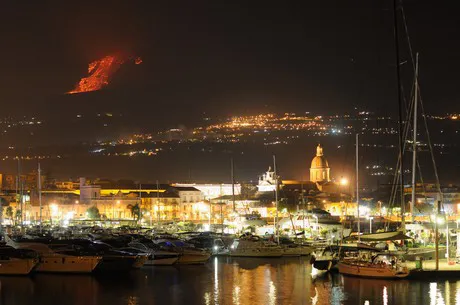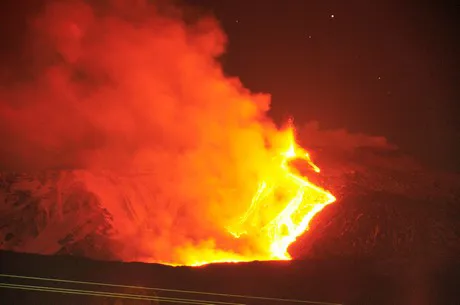
It all started when Lucas was working as a volcanologist in Hawaii. During a trip to Italy, he noticed how the local population made use of the fertile soil surrounding volcanoes. "They really grow everything there, from grapes to onions. But it's all still open-field. I started thinking, what if we could go inside the volcano and harness the immense strength straight from the earth's core?"
What followed was years of research and development. Thanks to a group of venture capitalists and a team of top scientists, the project saw a breakthrough in recent months, and in a few days, the first harvest from inside a volcano is expected. What is being grown? Hot peppers, of course.

Local-for-local
"It really makes sense when you think about it," Lucas says. "People have been building expensive greenhouses everywhere, but volcanoes offer a closed environment for free. And they're everywhere."
The abundance of volcanoes and their geographical dispersion make them ideal for local production. Professor Koothrappali, a volcanic market researcher, says this fits in perfectly with the local-for-local trend: "You have this huge structure, with the potential of housing hundreds of workers (during non-eruption, of course). And because volcanoes are often located in poorer regions, the people there get instant access to nutritious crops."

Diagonal cultivation
Yob de Sjin, crop consultant for the project, agrees. He says the inner architecture of volcanoes is uniquely suited to his new concept of diagonal cultivation, in which different crop types grow at different heights for easier picking. "It doesn't just make things more efficient for the pickers," he explains. "As well as this, it increases the variety of products on offer too."
But what about water? Yob admits that before the volcano project crossed his path, his diagonal setup had some problems with irrigation water flowing down from the top crop to the ones at the bottom. "But with the heat inside the volcano, the water evaporates, which makes absorption by the plants much easier. And another huge advantage is that you basically get direct access to geothermal heat!"

Challenges
So far, there seems to be only benefits. But Lucas warns against overenthusiasm. "While it's not a geothermal well, we do have to do a bit of drilling to get through the wall of the volcano. You never know what you're going to find there. Once we lost a drilling machine after a flow of lava suddenly appeared, which we hadn't spotted on the radar we use to determine a successful point of entry."
Still, both Lucas and Yob believe 100% that volcanic indoor cultivation will be the future. They'll both be dancing on a volcano this Sunday, when the first harvest of hot peppers is expected.
(For the record, the Sunday in question was April Fool's Day, so there's no such thing as growing inside volcanoes - not yet, anyway.)
